What a pearl and a nautilus taught me about finding ease: Part 4b, The Camino series
This is the continuation of my daughter Marielle's reflections on the question that followed her on the Camino: How can I live with more ease? Here's a clue: We're all happy accidents.
As my mother and I walked into Spain on the Camino de Santiago, from modern highways to medieval stone bridges, we discussed the writing exercise proposed by one of her favorite writing newsletters,
. What if we tell a narrative by going back in time, by starting with the end and moving backward to finish at the beginning—in other words, reversing chronology on the page?I thought of the narrative my mom and I were writing, starting with us walking the Camino in 2024, then the eye-opening experience my mom had in 1981, a Shakespeare enthusiast studying abroad in England, and finally the journey my great grandmother Marion did in 1969 with my great grandfather Leonard (both my namesakes) to London, Madrid, and Rome. All of these journeys were recorded in the same book, the worn black “Travel Diary” covering over half a century of ambitious and adventurous women discovering foreign shores. We had a nightly ritual to each record our impression of the day, continuing the story my great-grandmother started 55 years ago. This practice helped me as I continued to wrestle with the question I posed to myself on the Camino: How can I live with more ease? Read the first part here.
The pearl in all of us
I never got to meet my great-grandmother (our mortal timelines rarely allow for it), so reading her matter-of-fact and pleasantly surprised accounts, and my twenty-something mother’s effusive entries, after I finished my own poetry-infused contributions, gave me unprecedented insight into my maternal line. The missing generational gap in this precious journal was my grandma, but I was fortunate to spend three decades gleaning wisdom from her light.
Some of that wisdom seemed to trickle through even now when she is gone. My grandma was an avid reader, so it was fortuitous that our Camino started in Porto, home to “the most beautiful bookstore in the world,” Livraria Lello. At this magnificent temple of literature amid the crowds posing for selfies along its century old wooden banisters, I reached for a book by one of my grandma’s favorite authors, The Pearl by John Steinbeck. A thin volume, it was a perfect choice of souvenir for someone about to lug it in a backpack over 300km for the next two weeks.
The lesson I found inside of it, reading it one day while tanning next to a turquoise pool lashed by Atlantic sea spray, seemed as if sent by my grandmother. The book shares the consequences of rapidly changing fortune, when a humble Mexican pearl diver and his wife find “the pearl of the world”. Who knew, though, that, for me, this piece of literature’s most inspiring concept was Steinbeck’s scientific description of how a pearl comes to be?
The gray oysters with ruffles like skirts on the shells, the barnacle-crusted oysters with little bits of weed clinging to the skirts and small crabs climbing over them. An accident could happen to these oysters, a grain of sand could lie in the folds of muscle and irritate the flesh until in self-protection the flesh coated the grain with a layer of smooth cement. But once started, the flesh continued to coat the foreign body until it fell free in some tidal flurry or until the oyster was destroyed. […] the pearls were accidents, and the finding of one was luck, a little pat on the back by God or the gods or both.
A pearl is essentially a happy accident. And aren’t we all happy accidents? An aberration that turns into something beautiful, and widely admired around the world. To further extend the metaphor, if we are all grains of sand rolling on the ocean floor, why shouldn’t our beauty come in part from the protective barriers that layer us and in so doing, allow us to reflect the sun and shine?
Overlooking an estuary famous for its oysters, I wrote this poem:
The nautilus in all of us
“Our ability to find something to love, and to love again for the first time, depends greatly on how we resolve and integrate where we’ve been before. A great model for us exists in the chambered nautilus…Over time it builds a spiral shell, but always lives in its newest chamber. The other chambers, they say, contain a gas or liquid that helps the nautilus control its buoyancy. Even here, a mute lesson in how to use the past: live in the most recent chamber and use the others to stay afloat.”
- Mark Nepo, The Awakening
We read this passage of Nepo’s Book of Awakening on our last day of walking the Camino and it triggered an emotional conversation. I don’t do New Year’s resolutions, but every year I choose a word to focus on as a sort of mantra and point of self-improvement. This year’s word is “presence”.
As we began to walk through a little Galician village, past baby goats and recently plucked grapevines, my mother responded to today’s Awakening meditation. “What if we shouldn’t be trying to be so present? What if appreciating the past and looking forward to the future has value, too? How can I embrace being someone who wants to live in it all: present, past, and future?” This directly challenged why I had chosen and worked so hard on that idea of presence this year. But I felt she had a point.
How does our past provide buoyancy to our present? On the flip side, how can it weigh us down if we don’t allow ourselves to enter our newest chambers? Our conversation moved on to the concept of what chambers we choose to live in. I feel like I sometimes still live in my experiences of being bullied in school, the hurtfulness of not finding a sense of belonging in the place I grew up. Even that beautiful sunny morning, after two weeks of walking 300km and conversing with people of 20 different nationalities never saying a judging word, I became self conscious and worried that I wasn’t a “proper pilgrim”, that I didn’t belong. I knew I was letting my old story, the one about me being a weird little outcast of a child, prevent me from rising to who I am now.
My mom introduced me to Trevor Hall’s song “Old Story” on our walk and it was a great accompaniment to this conversation. “You’ve just got to let that old story go,” a line from the song, is what my mom repeated to me every time I got self-conscious or worried what others were thinking of me. Easier said than done, but so true. Our memories are stories we tell ourselves, and we have the power to rewrite them at any moment. I needed to rewrite my story about being enough, about belonging to whatever community I wanted to be a part of, in order for me to leave those old chambers and let them lift me up.
These conversations, songs, quotes, and landscapes experienced along the Camino taught me that working to be more present is also about making peace with your past, and coming to terms with the uncertainty of the future. Time is cyclical, not linear. Going back to the idea of my narrative chronologically reversed, what am I passing along to my grandmother, to her memory (cruelly stolen by dementia at the end), by shaping this story with my mother?
The symphony in all of us
“I have learned, painfully and thoroughly, that each of us is an entire symphony, and though there are times when all of us will not be heard, dis-ease begins the moment all of us is not played.” - Mark Nepo
We read these words, also part of the Awakening passage from the last day on the Camino, in a loud roadside restaurant where we stopped for morning coffee before our final 14 km to the famous cathedral where all the Caminos end. It spoke to me as I pulled away from my mom and used music to retreat into myself.
Music, the quiet symphony inside me, is where I find rest. At the culmination of this 300km journey, I was painfully aware that if I’m not truly myself, I will never stop seeking those yellow arrows of yearning, the signs pointing the way on the Camino now a metaphor for something so poignant in my life. I will always be at a crossroads between that wild poet and the perfectionist planner. I will keep fearing what others think of me, to lose my hold on a sense of belonging. To find the ease I seek, I need to stop playing my whole symphony quietly inside me and start performing it for everyone. I know this was what my departed friend, a fellow melophile and a natural at following the beat of her own drum, would want for me.
On the day we were to fly back to Barcelona, we took a bus to Finisterre, The End of the World, considered the ultimate final point for many pilgrims on their walk. We arrived at a small fishing hamlet and walked three kilometers to the very western edge of the Iberian Peninsula. A thousand years ago, the local Celtic tribes believed this was the end of the world, connecting the land of the dead with the land of the living. I thought about my question, about my grandma, about my late best friend, about my mother. I thought about how we are all rivers, and we all reach the same sea in the end.
Looking out at the blue horizon, I wrote this poem, inviting the ease I had sought in the lifelong endeavor of trying to find my own path to presence and self-acceptance:
Marielle is an anthropologist, poet, and avid traveler currently residing in Barcelona, Spain. She has worked in operations and research across multiple sectors for almost a decade, while living in places as diverse as Berlin, Paris, New York City, London, and Amman. In her free time she enjoys going to concerts (her partner is a musician), trying good food and wine, and planning her next adventure. To hear all about her recent escapades and top travel tips, sign up for her soon-to-be launched publication the Adventure Agenda.
Hop over to Part 1, Part 2, and Part 3 if you want to catch up. Then next week we bring you Part 5, We Are All Rivers, the story of our Camino project where we asked other pilgrims “What song keeps you going when life gets hard?” Finally In Part 6, Planning Your Camino, Oct 29, we share all the practical tips and resources we used in planning this journey so you can plan yours.
For paid subscribers, there’s an hour-long live Zoom call Saturday November 2 at 8am PST/11am EST/5pm CET to answer all your questions about the Camino. We love sharing about this incredible adventure!
As always, paid subscribers also receive a voice-over from the author of the week’s essay.






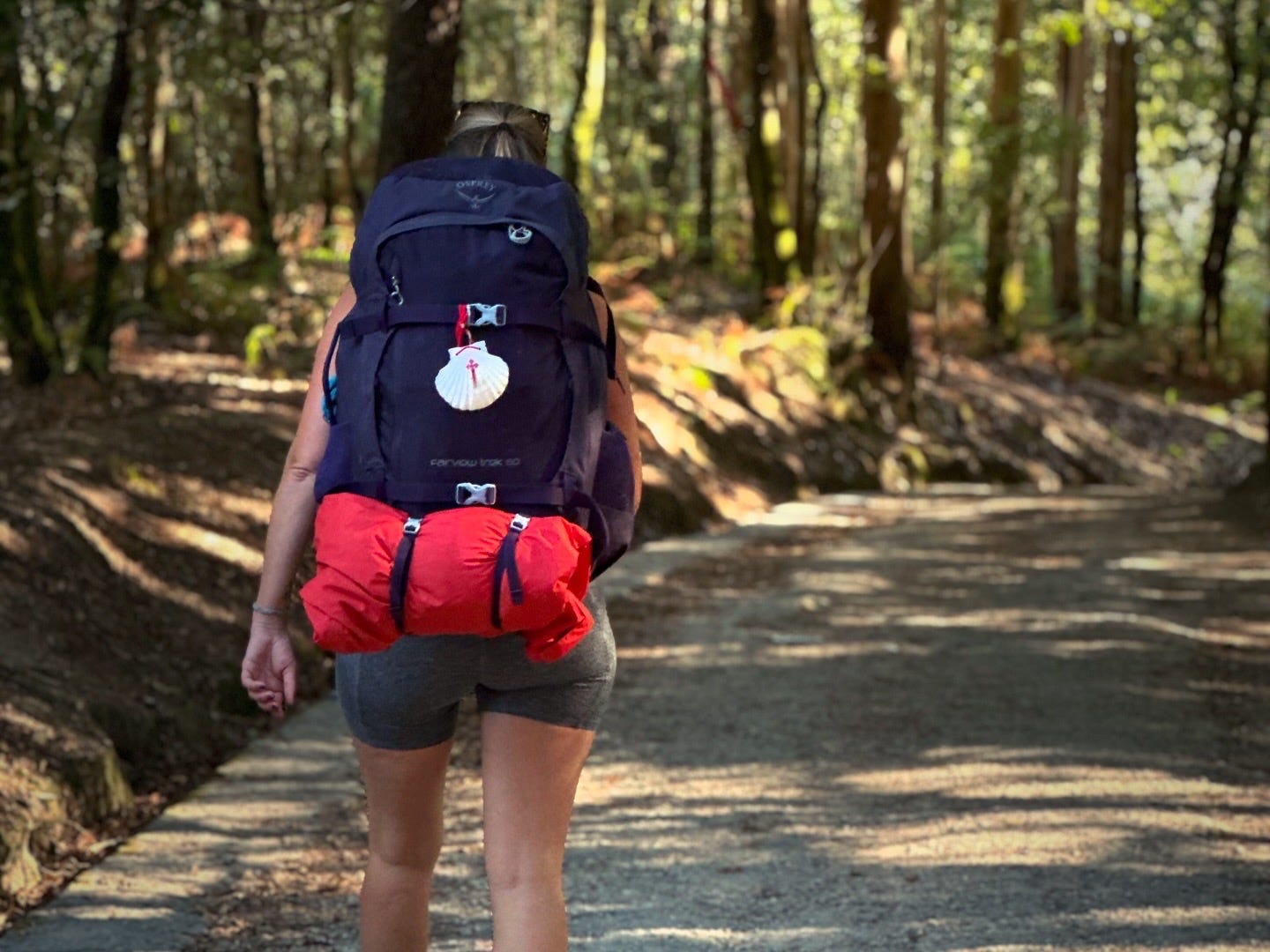
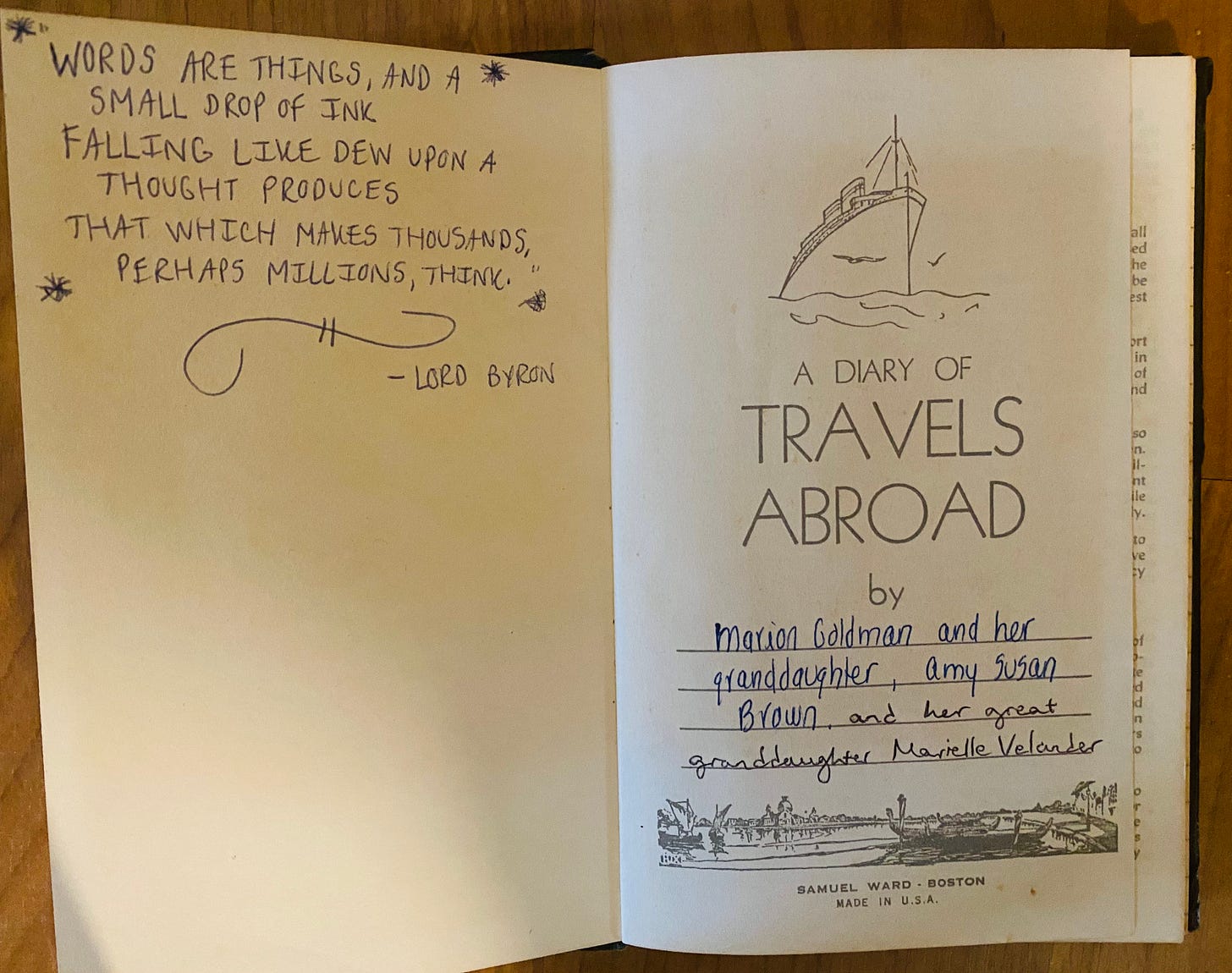
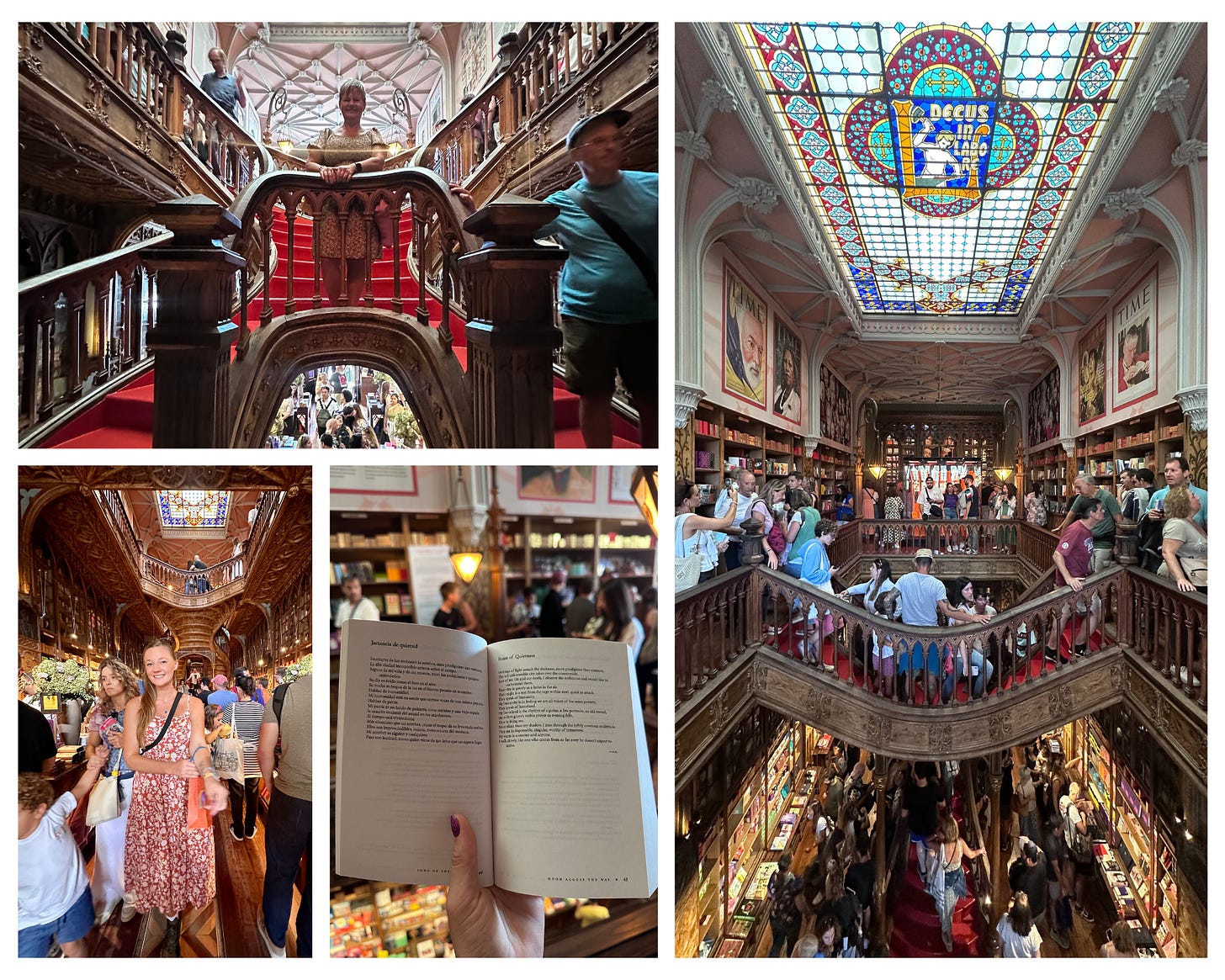
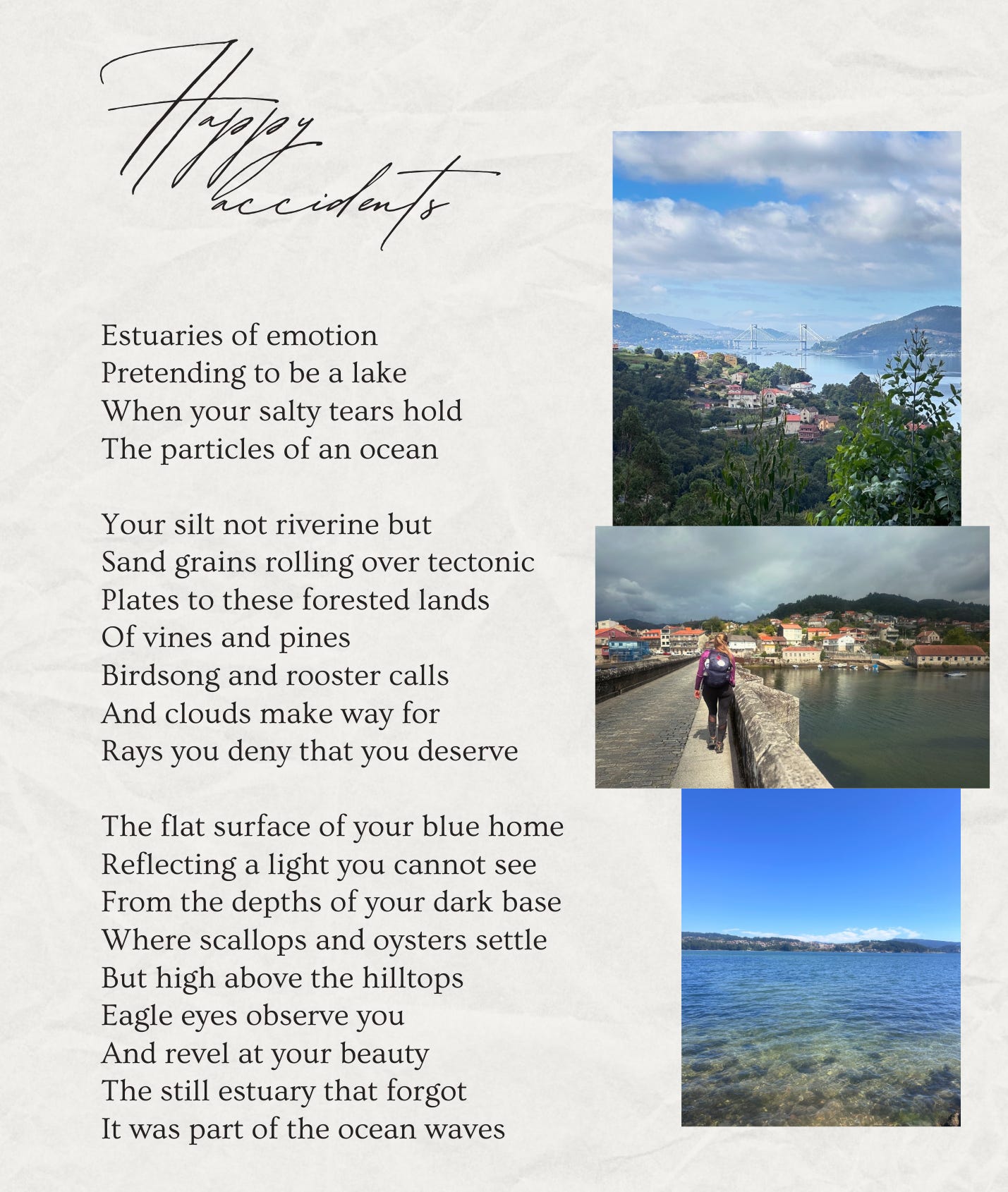
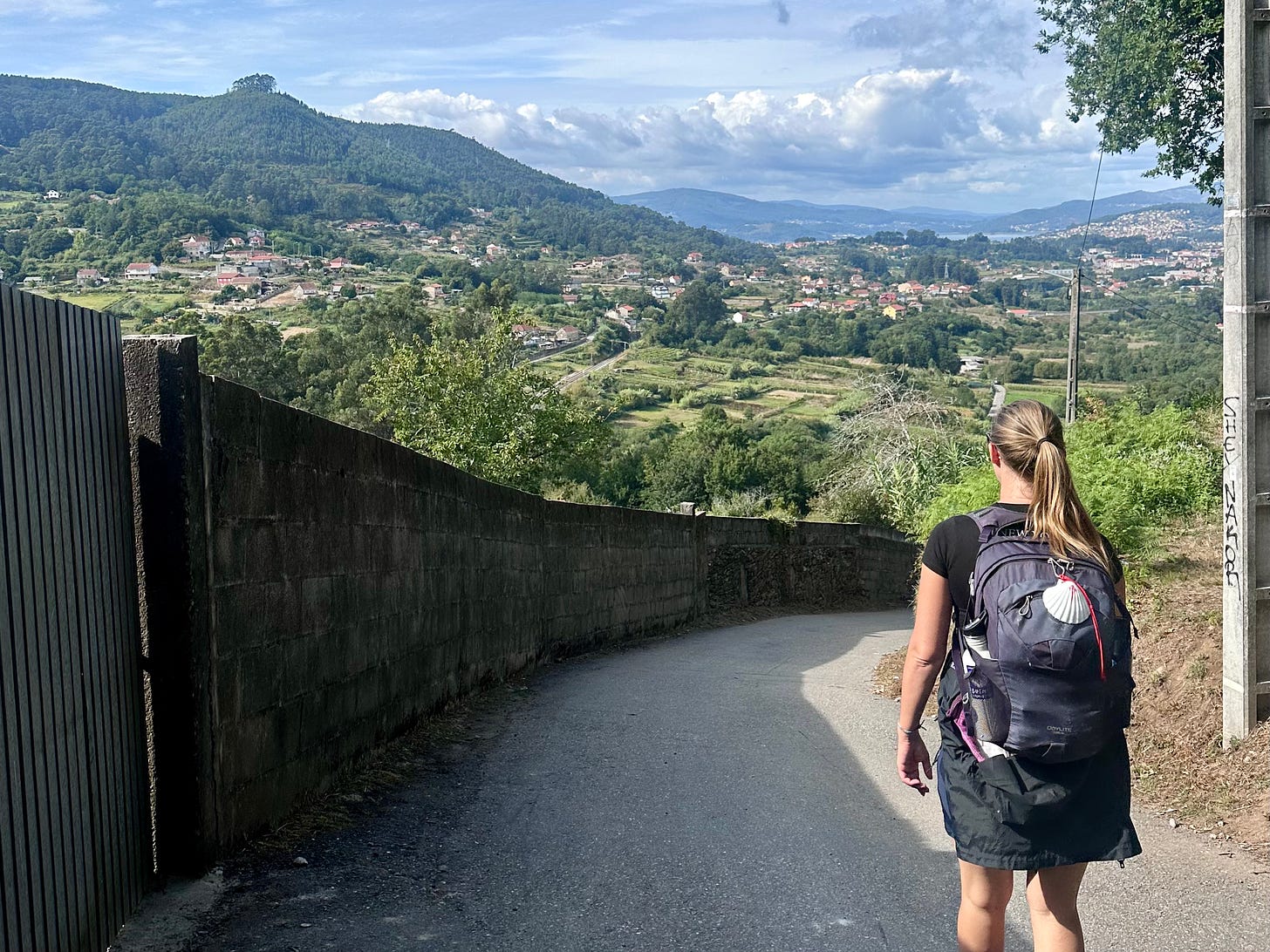
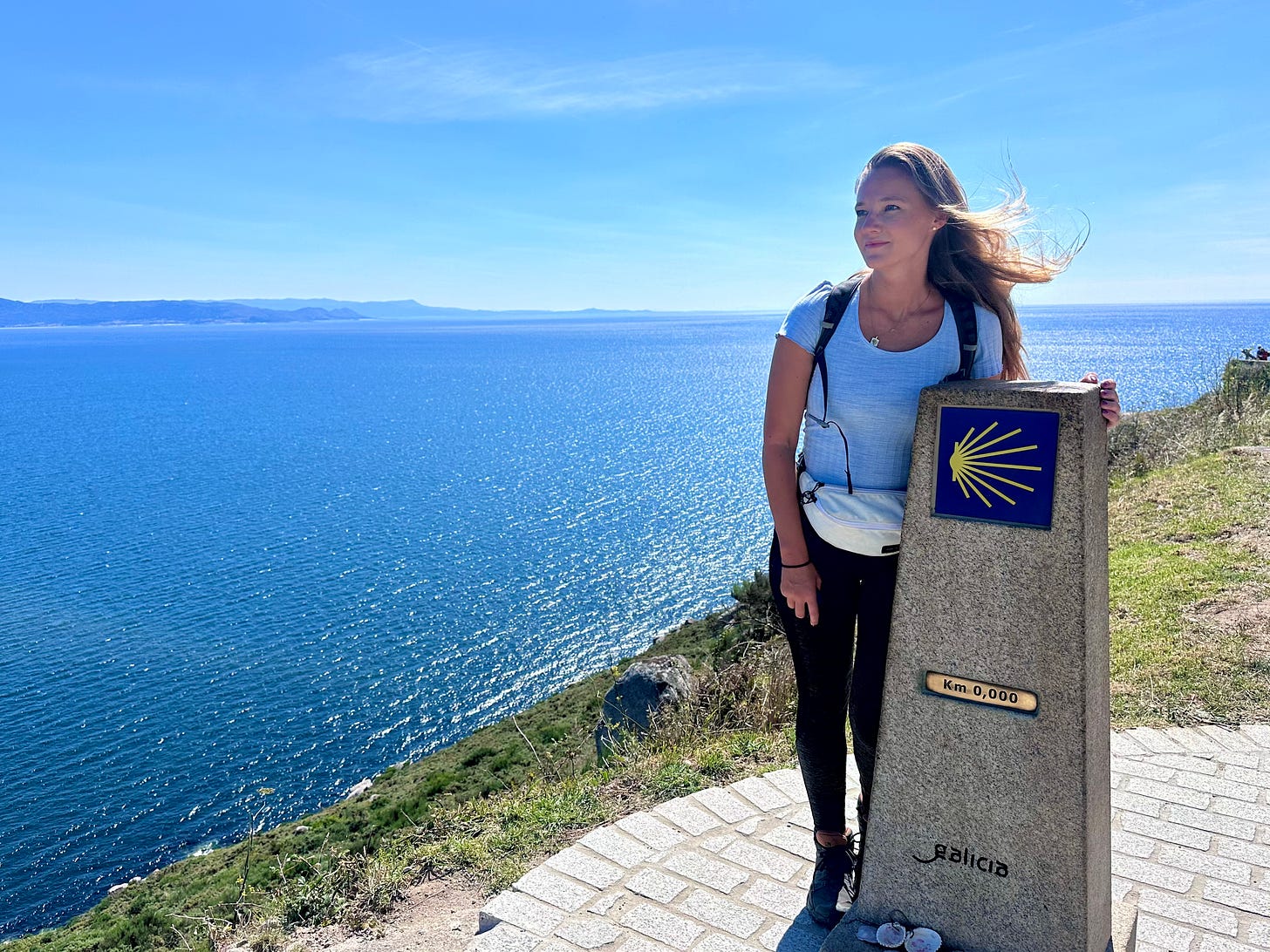


beautiful. what a chance to get to know one another and yourselves...
Hi Marielle.
I’m enjoying and relating to your reflections while on the Camino with your mother. I especially resonate not only with your past pondering of how to find more ease, but this post in which you ponder the power of both past and future while staying with the gift of the present. I love that you considered your mom’s perspective and weaved it into your own
Coming up on 60, I still struggle with some of the same questions & struggles as you are: perfectionism, belonging, bullying, finding ease and flow; loss.
I’m a Mark Nepo fan, especially of The Awakening (a big part of my early sobriety reading and now just life wisdom reading), so I love that you included some of his inspiration along with your own beautiful poems.
Keep going, Marielle. With your writing, with your travels, with your progress on letting go of control & perfection and in finding the flow of ease.
Oh. And Thank you for the photos of Livraria Lello. This was a new discovery for me and I can see why it is so beloved and special.